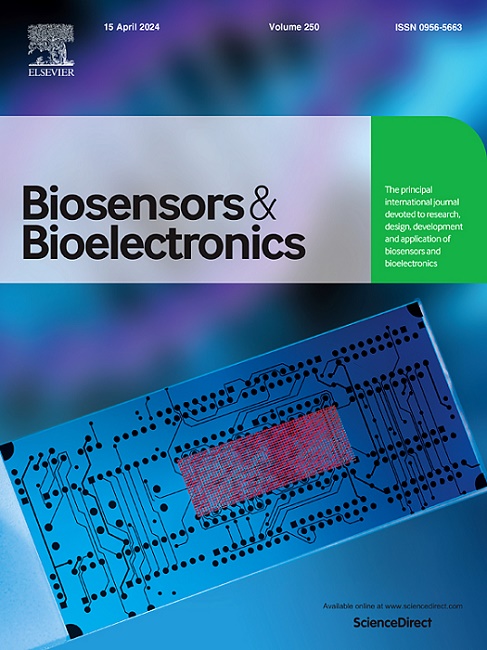Development and application of a highly specific whole-cell biosensor for supersulfide detection in environmental samples
IF 10.7
1区 生物学
Q1 BIOPHYSICS
引用次数: 0
Abstract
Supersulfides are a class of sulfur compounds in either zero-valent or monovalent negative states, such as elemental sulfur, inorganic polysulfides, and organic polysulfides, and they play crucial roles in biological systems, environmental sulfur cycling, and Li-S batteries. However, accurate quantification of these compounds remains challenging due to their reactive nature and structural complexity. Here, we report the first whole-cell biosensor for the specific detection of supersulfides using the supersulfide-sensing repressor BigR of Agrobacterium tumefaciens (AtBigR). This novel biosensor system shows exceptional selectivity for supersulfides with negligible response to H2S, thiosulfate, and glutathione. Through systematic optimization of the AtBigR-based whole-cell biosensor (AtBigR-WCB), we developed a biosensor with negligible background leakage and high sensitivity, capable of detecting supersulfides at micromolar levels. We successfully applied AtBigR-WCB to quantify supersulfide contents in marine sediments from diverse seafloor topographies and lithium polysulfides in lithium-sulfur battery electrolytes. Widespread supersulfide accumulation was detected in deeper layers of marine sediments across various environments. Additionally, the optimized AtBigR regulatory system was a novel, low-leakage regulating system, which offers a new type of gene-regulating system with potential applications in synthetic biology. Our work establishes a new platform for quantifying supersulfides, which is helpful to further our understanding of supersulfides in biology, environments, and lithium sulfur batteries.
用于环境样品超硫化物检测的高特异性全细胞生物传感器的开发与应用
超硫化物是一类零价或单价负态的硫化合物,如单质硫、无机多硫化物和有机多硫化物,它们在生物系统、环境硫循环和锂硫电池中起着至关重要的作用。然而,由于它们的反应性和结构复杂性,对这些化合物的准确定量仍然具有挑战性。在这里,我们报道了第一个使用农杆菌的超硫化物传感抑制因子BigR (AtBigR)特异性检测超硫化物的全细胞生物传感器。这种新型的生物传感器系统对超硫化物具有特殊的选择性,对硫化氢、硫代硫酸盐和谷胱甘肽的反应可以忽略不计。通过对基于atbigr的全细胞生物传感器(AtBigR-WCB)的系统优化,我们开发了一种可以忽略背景泄漏和高灵敏度的生物传感器,能够检测微摩尔水平的超硫化物。我们成功地应用了AtBigR-WCB来量化来自不同海底地形的海洋沉积物中的超硫化物含量和锂硫电池电解质中的锂多硫化物。在不同的环境中,在海洋沉积物的较深层中发现了广泛的超硫化物积累。此外,优化后的AtBigR调控系统是一种新颖的低泄漏调控系统,为合成生物学提供了一种具有潜在应用前景的新型基因调控系统。本研究为超硫化物的定量研究建立了一个新的平台,有助于进一步了解超硫化物在生物学、环境和锂硫电池中的应用。
本文章由计算机程序翻译,如有差异,请以英文原文为准。
求助全文
约1分钟内获得全文
求助全文
来源期刊

Biosensors and Bioelectronics
工程技术-电化学
CiteScore
20.80
自引率
7.10%
发文量
1006
审稿时长
29 days
期刊介绍:
Biosensors & Bioelectronics, along with its open access companion journal Biosensors & Bioelectronics: X, is the leading international publication in the field of biosensors and bioelectronics. It covers research, design, development, and application of biosensors, which are analytical devices incorporating biological materials with physicochemical transducers. These devices, including sensors, DNA chips, electronic noses, and lab-on-a-chip, produce digital signals proportional to specific analytes. Examples include immunosensors and enzyme-based biosensors, applied in various fields such as medicine, environmental monitoring, and food industry. The journal also focuses on molecular and supramolecular structures for enhancing device performance.
 求助内容:
求助内容: 应助结果提醒方式:
应助结果提醒方式:


